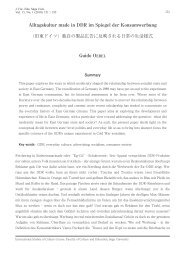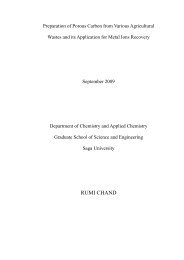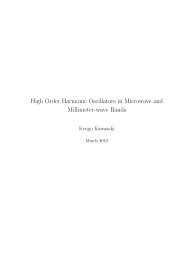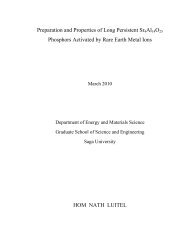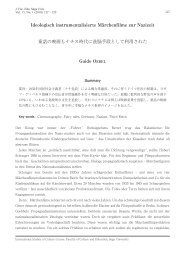ε (eV)
ε (eV)
ε (eV)
You also want an ePaper? Increase the reach of your titles
YUMPU automatically turns print PDFs into web optimized ePapers that Google loves.
inside the spores was measured trying to confirm these results. On the other<br />
hand, the role of optical radiation in atmospheric pressure discharges was recently<br />
confirmed by other scientists and it was shown that UV photons lead the microbial<br />
inactivation process [57].<br />
1.3.2 Mechanisms of plasma sterilization at low pressure<br />
At low pressure, a detailed sterilization mechanism has been developed taking<br />
into account the microorganism survival curves (i.e., the number of microorgan-<br />
isms as a function of the treatment time) [17, 18, 70-75, 81]. The physical processes<br />
responsible for the observed temporal dynamics of the bacteria population were<br />
found to be carried out mainly by UV photons and radical species created in<br />
plasma. The last ones are getting adsorbed on the microorganism surface in such<br />
a way that volatile compounds are formed. Such an erosion mechanism of sur-<br />
faces is known as etching [61, 82-84]. Following the steps of the survival curve,<br />
the inactivation process takes place in three phases detailed below:<br />
1. In the first phase the destruction of microorganism genetic material (i.e.,<br />
DNA) by UV photons dominates the inactivation process as it is shown in<br />
Fig 1.3;<br />
2. The erosion of the microorganism through etching takes place in the sec-<br />
ond phase. Here, the reactive species are adsorbed on the microorganisms<br />
surface and start chemical reactions (chemical etching) forming compounds<br />
15



